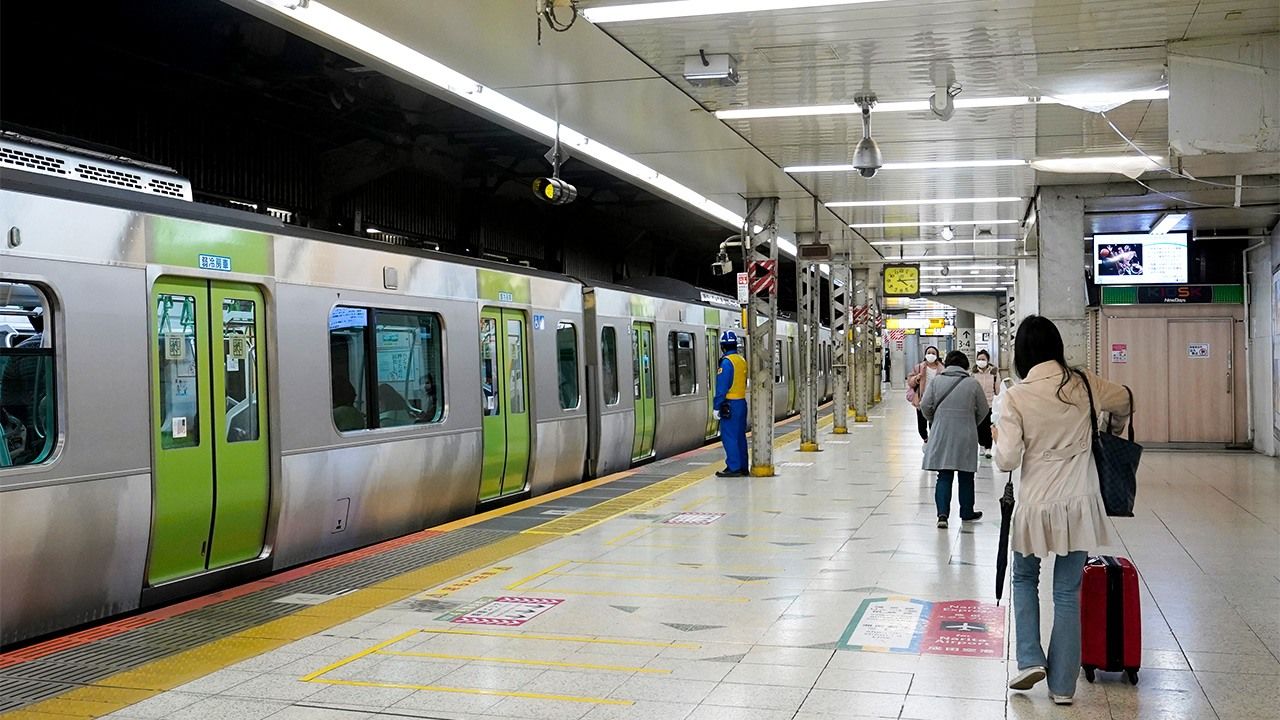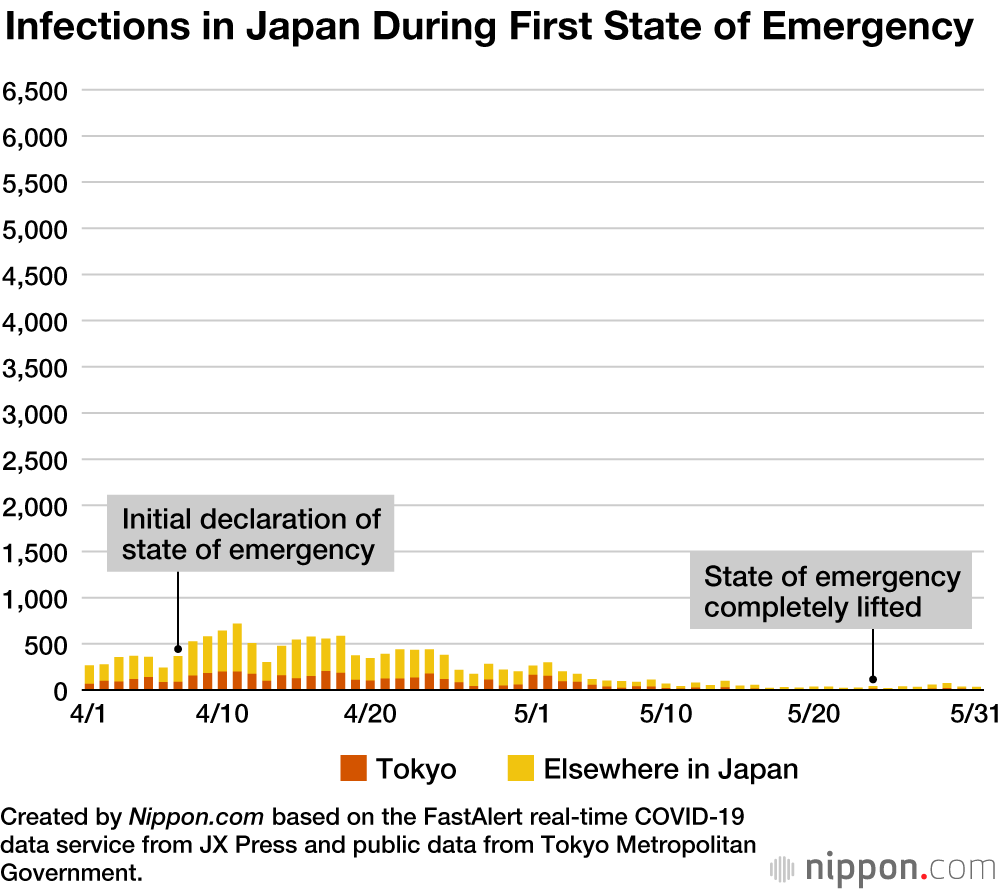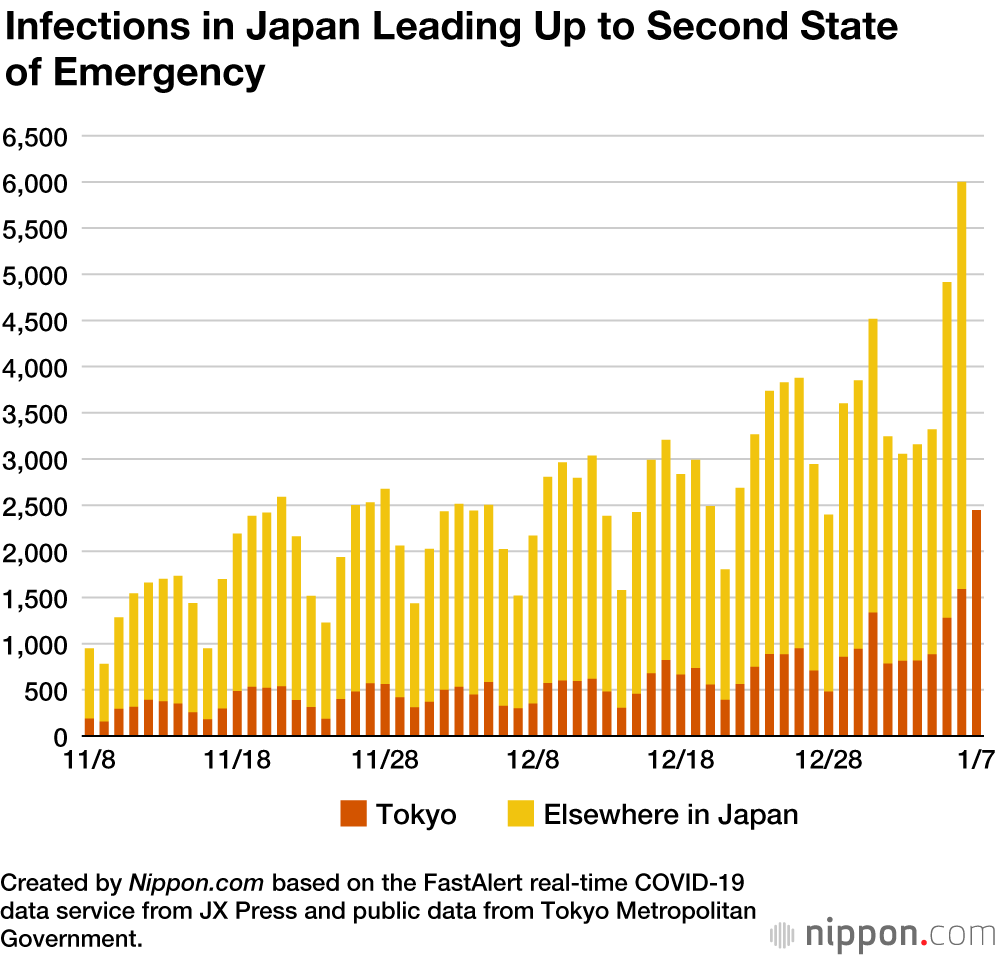
Japan Faces Tougher Task to Contain Infections in Second State of Emergency
Society Health- English
- 日本語
- 简体字
- 繁體字
- Français
- Español
- العربية
- Русский
On January 7, 2021, the Japanese government announced a state of emergency for the prefectures of Tokyo, Saitama, Chiba, and Kanagawa that will run from January 8 to February 7. Due to the high risk of COVID-19 infection, bars and restaurants have been asked to shorten operating hours, while residents have been requested to work from home where possible and refrain from going outside unnecessarily after 8:00 pm. As of January 13, reports indicate that seven other prefectures, including Osaka and Aichi, are set to join the state of emergency.
This is the second time the government has announced a state of emergency due to the coronavirus. The first was declared on April 7, 2020, a day that saw Tokyo report 87 new infections. At that time, uncertainty about the newly emerged disease produced a strong sense of caution among the populace, and streets and train cars were far emptier than usual. However, nearly a year since the first reports of COVID-19, the once high level of alarm seems to have diminished. When the second declaration was made on January 7, 2021, Tokyo recorded 2,447 new cases. Comparing figures during last year’s state of emergency and the two months before the current one show a noticeable difference in scale.
Japan’s First State of Emergency: A Timeline
| February 27 | Prime Minister Abe Shinzō calls for the closure of all Japanese elementary, junior high, and high schools. |
| February 28 | Hokkaidō Governor Suzuki Naomichi declares a state of emergency in the prefecture. |
| March 11 | The World Health Organization declares that the COVID-19 outbreak is a pandemic. |
| March 25 | Tokyo Governor Koike Yuriko warns of the danger of an explosive rise in infections, calling on residents to refrain from unnecessary travel (Tokyo records 41 new cases.) |
| March 30 | Governor Koike asks residents to refrain from going outside at night. (Tokyo records 12 new cases.) |
| April 4 | Tokyo reports a daily total of more than 100 new cases for the first time. |
| April 7 | Abe declares a state of emergency in the prefectures of Tokyo, Kanagawa, Saitama, Chiba, Osaka, Hyōgo, and Fukuoka that is scheduled to last until May 6. (Tokyo records 87 new cases.) |
| April 8 | The daily tally of new cases nationally exceeds 500 for the first time. |
| April 10 | The Tokyo Metropolitan Government requests that karaoke parlors and nightclubs close and that izakaya and other establishments serving food and drink refrain from serving alcohol after 7:00 pm and close at 8:00 pm. (Tokyo records 199 new cases.) |
| April 11 | Abe urges offices in areas under the state of emergency to implement working from home, targeting a 70% reduction in commuters, and calls for Japanese residents to refrain from going to establishments offering settai services. |
| April 16 | The state of emergency is expanded nationwide, with 13 prefectures designated for tighter measures. |
| April 16 | Abe announces plans to give subsidies of ¥100,000 to each person. |
| April 18 | Japan’s total COVID-19 cases rise above 10,000. |
| May 4 | The state of emergency is extended until May 31. (Tokyo records 87 new cases.) |
| May 7 | The number of daily cases nationwide drops below 100. |
| May 14 | The state of emergency is lifted in 39 of the 47 prefectures. (Tokyo records 30 new cases.) |
| May 21 | The state of emergency is lifted in the prefectures of Osaka, Hyōgo, and Kyoto. |
| May 25 | The state of emergency is lifted in the remaining prefectures of Tokyo, Kanagawa, Saitama, Chiba, and Hokkaidō. (Tokyo records 8 new cases.) |
| June 2 | The capital issues its first Tokyo Alert, calling for vigilance from residents. (Tokyo records 34 new cases.) |
| June 19 | The government lifts its requests for voluntary restrictions on crossing prefectural borders. |
Highlighted items indicate events that took place during the state of emergency.
(Originally published in Japanese. Banner photo: A largely deserted platform at Shibuya Station, Tokyo, one week after the announcement of the first state of emergency in April 2020. © Jiji.)

